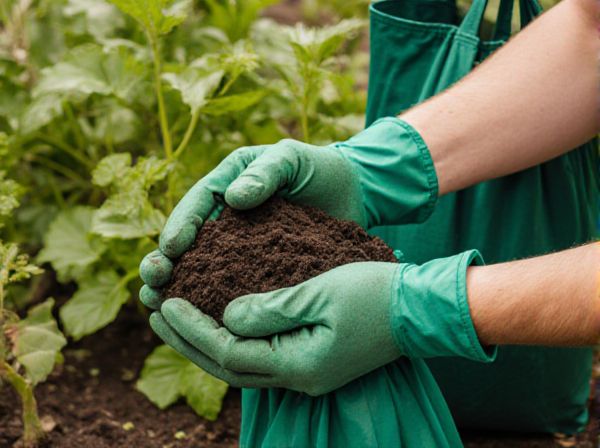
Grow bags vs plastic containers Illustration
Grow bags provide superior aeration and drainage compared to plastic containers, promoting healthier root development and preventing waterlogging. These breathable fabric bags allow excess moisture to escape, reducing the risk of root rot and improving overall plant growth. Plastic containers, while durable and reusable, can retain water and heat, potentially stressing roots and limiting oxygen availability.
Table of Comparison
| Feature | Grow Bags | Plastic Containers |
|---|---|---|
| Material | Breathable fabric | Non-porous plastic |
| Drainage | Excellent natural drainage | Depends on drilled holes |
| Root Aeration | Promotes air pruning, healthier roots | Limited aeration, potential root circling |
| Weight | Lightweight and portable | Varies, generally heavier than grow bags |
| Durability | Moderate, may degrade over time | High, reusable for years |
| Temperature Regulation | Better airflow, reduces overheating | Can retain heat, possible root stress |
| Cost | Generally inexpensive | Varies, often higher than grow bags |
| Environmental Impact | Eco-friendly, biodegradable options | Plastic waste concerns, less eco-friendly |
Introduction to Grow Bags and Plastic Containers
Grow bags are breathable fabric containers that promote healthy root aeration and prevent soil compaction, enhancing plant growth and drainage. Plastic containers, made from durable, non-porous materials, retain moisture longer and provide stability but may risk root circling and reduced oxygen flow. Choosing between grow bags and plastic containers depends on plant type, watering needs, and cultivation environment.
Material Differences: Fabric vs. Plastic
Grow bags are made from breathable fabric materials like non-woven polypropylene, allowing air pruning of roots and improved oxygen flow, which enhances root health and prevents overwatering issues. Plastic containers, typically constructed from rigid polyethylene or polypropylene, offer durability and water retention but can lead to root circling and reduced aeration. The porous nature of fabric grow bags promotes better drainage and temperature regulation, while plastic containers may trap heat and moisture, affecting plant growth.
Drainage and Aeration Capabilities
Grow bags provide superior drainage and aeration compared to plastic containers due to their breathable fabric material, which prevents waterlogging and promotes healthy root oxygenation. Plastic containers often retain excess moisture, leading to poor air circulation and increased risk of root rot. The enhanced airflow in grow bags supports robust root development and overall plant health.
Root Growth and Plant Health
Grow bags promote superior root aeration compared to plastic containers, preventing root circling and encouraging healthy root expansion. The breathable fabric of grow bags facilitates oxygen flow and drainage, reducing the risk of root rot and enhancing overall plant health. Plastic containers often retain excess moisture and limit airflow, which can hinder root development and increase susceptibility to diseases.
Temperature Regulation in Containers
Grow bags provide superior temperature regulation compared to plastic containers due to their breathable fabric, which allows excess heat to escape and prevents root overheating. Plastic containers tend to retain heat, causing soil temperatures to rise quickly and potentially stressing plants. Effective temperature control in containers directly influences root health and overall plant growth.
Durability and Longevity Comparison
Grow bags offer superior breathability and root aeration, promoting healthier plant growth but tend to degrade faster due to UV exposure and constant moisture. Plastic containers demonstrate higher durability and longevity, often lasting several years without cracking or breaking, making them ideal for long-term use. Selecting between grow bags and plastic containers depends on balancing the need for root health versus long-lasting structural integrity.
Portability and Storage Considerations
Grow bags offer superior portability due to their lightweight, flexible fabric that can be easily folded and stored when not in use, unlike rigid plastic containers that occupy more space and are cumbersome to move. Plastic containers tend to retain water and soil, making them heavier and less convenient for frequent relocation or compact storage. Choosing grow bags enhances ease of transport and efficient storage solutions, particularly for gardeners with limited space or mobility needs.
Environmental Impact and Sustainability
Grow bags offer superior environmental benefits compared to plastic containers due to their biodegradable materials and enhanced soil aeration. Unlike plastic containers, which contribute to long-term landfill waste and microplastic pollution, grow bags decompose naturally and reduce environmental footprint. Sustainable gardening practices favor grow bags for minimizing plastic consumption and promoting healthier root development.
Cost-Effectiveness Analysis
Grow bags generally offer a more cost-effective solution compared to plastic containers due to their lower initial purchase price and durability, which reduces the need for frequent replacement. Plastic containers may require higher upfront investment and can degrade faster under harsh weather, leading to additional costs. The lightweight nature of grow bags also lowers transportation and handling expenses, enhancing overall cost efficiency in container gardening.
Best Uses: Which Container for Which Plants
Grow bags offer superior aeration and drainage, making them ideal for root vegetables like carrots, potatoes, and onions that require well-ventilated soil to prevent rot. Plastic containers retain moisture better and are suited for water-loving plants such as tomatoes, peppers, and herbs that need consistent hydration. Selecting the right container type depends on the specific plant's water and root oxygen requirements to optimize growth and yield.
Grow bags vs plastic containers Infographic

 gardendif.com
gardendif.com